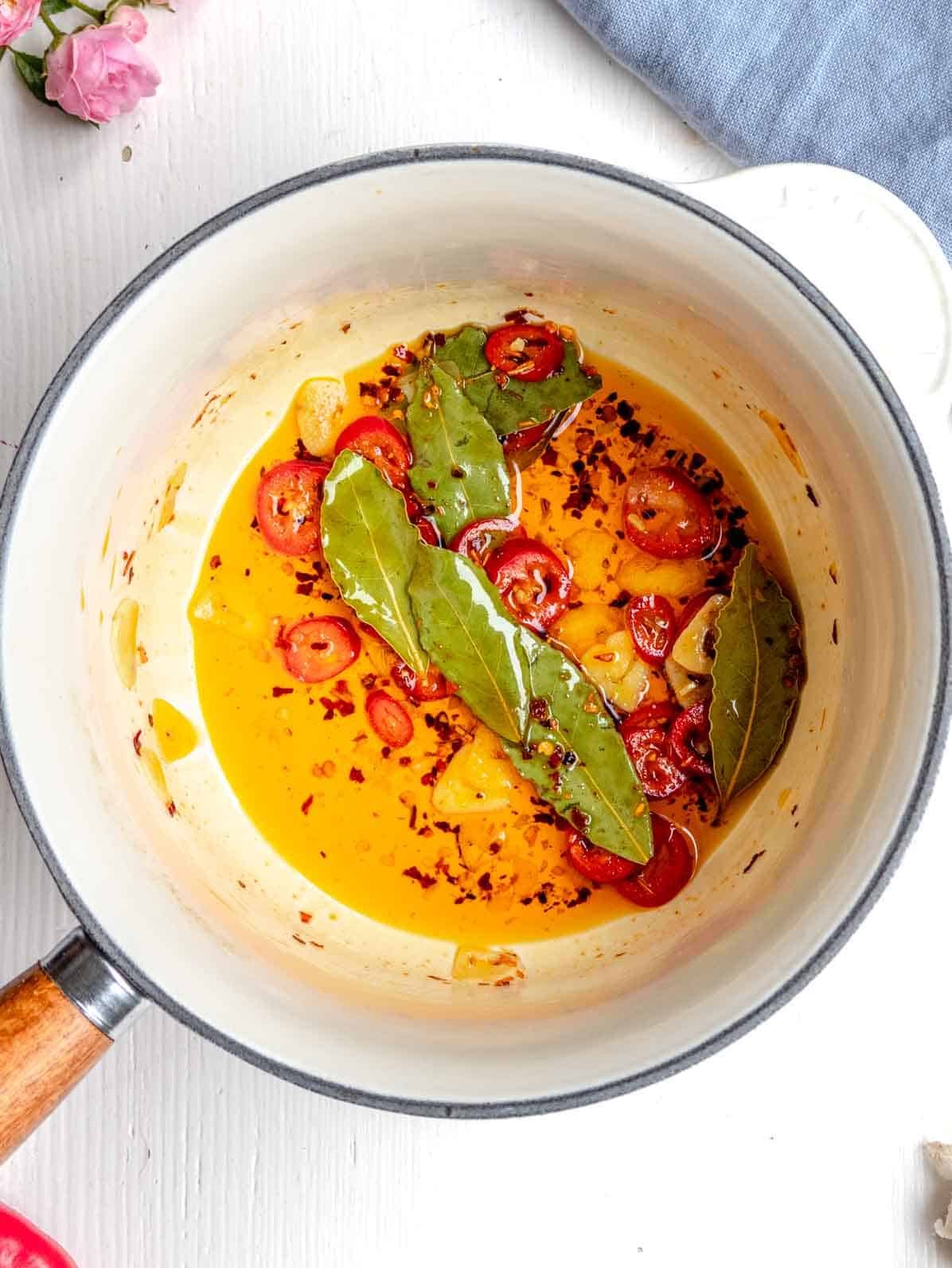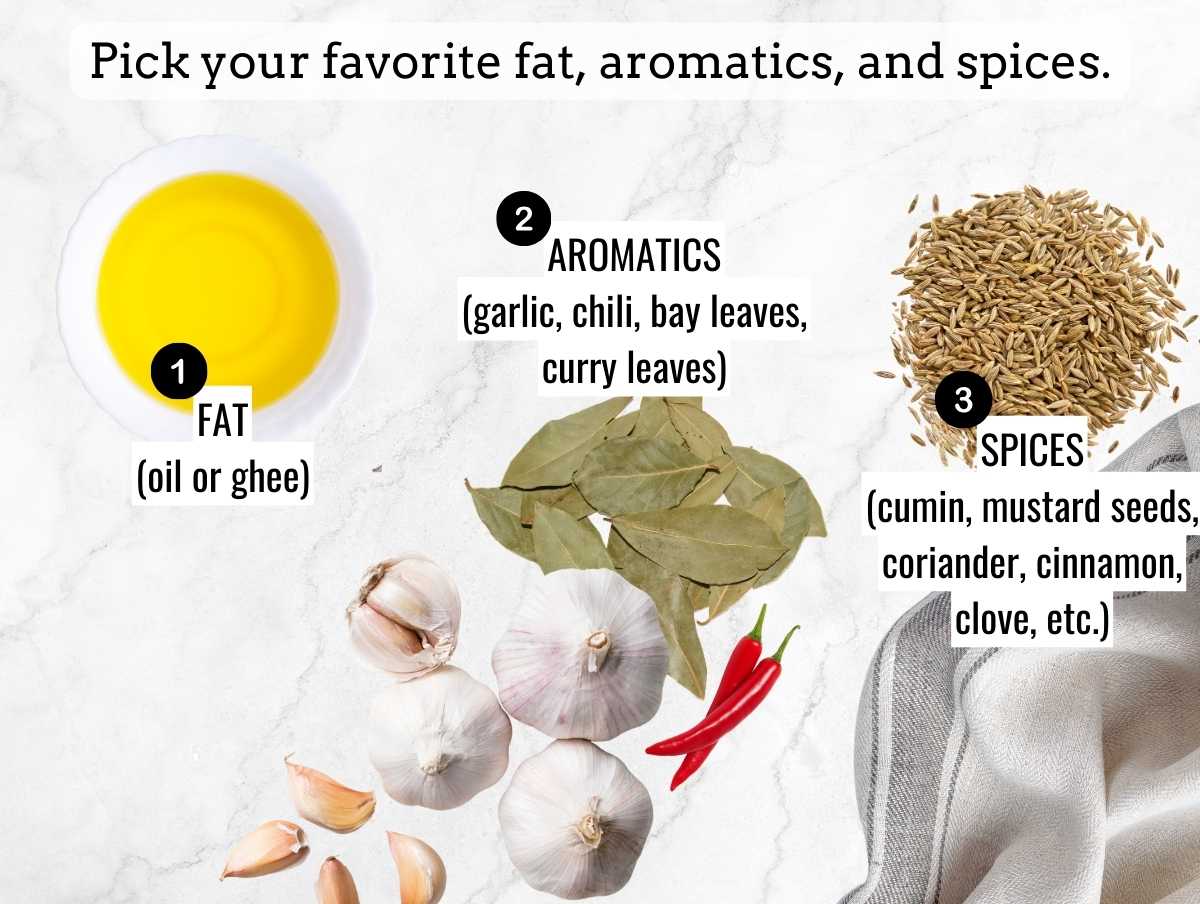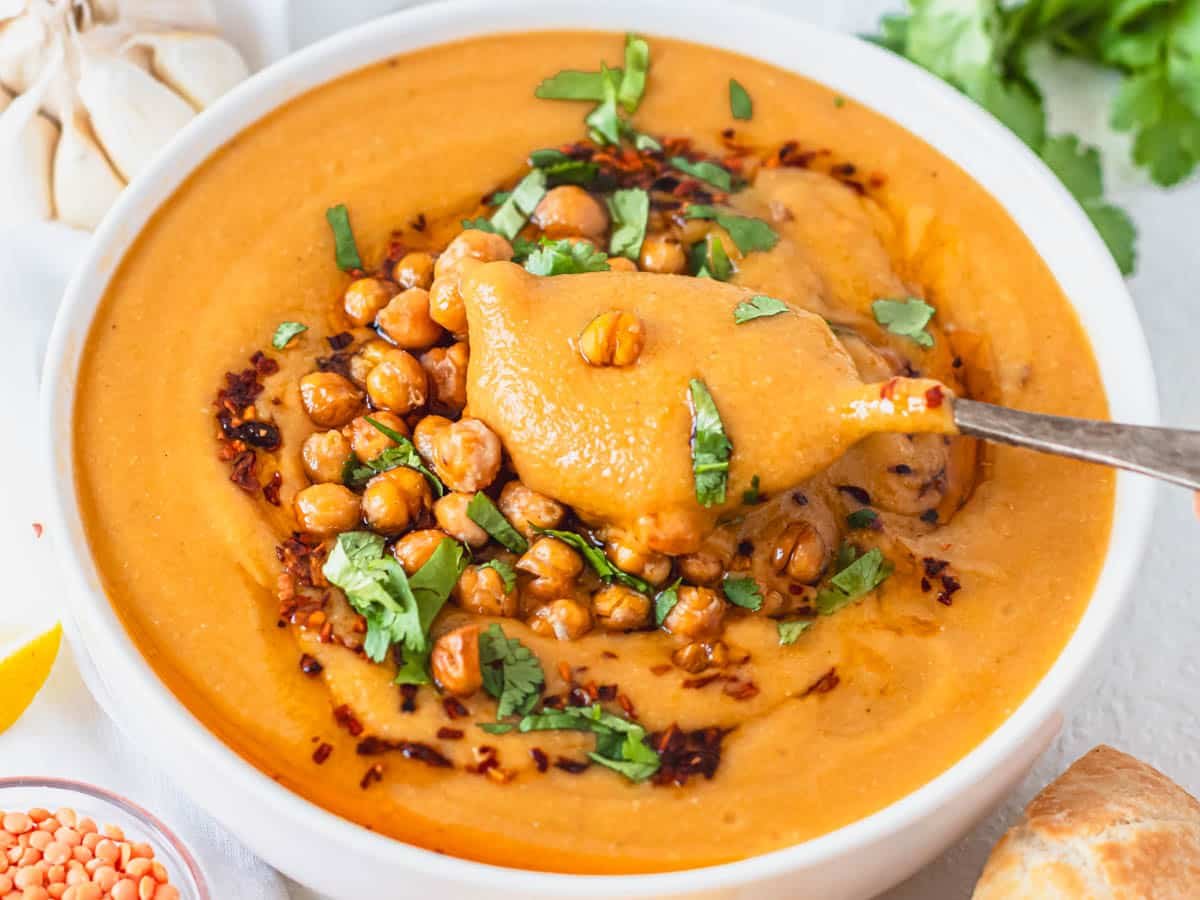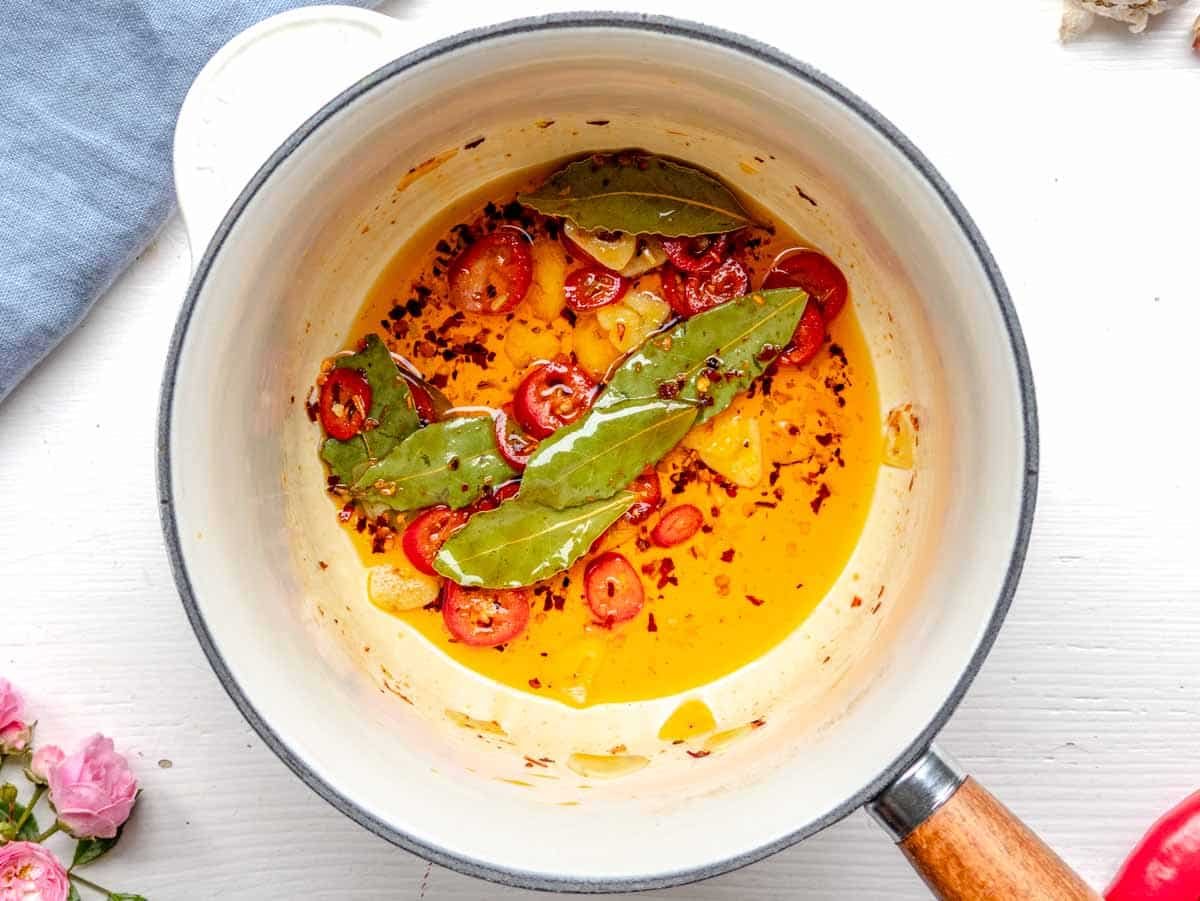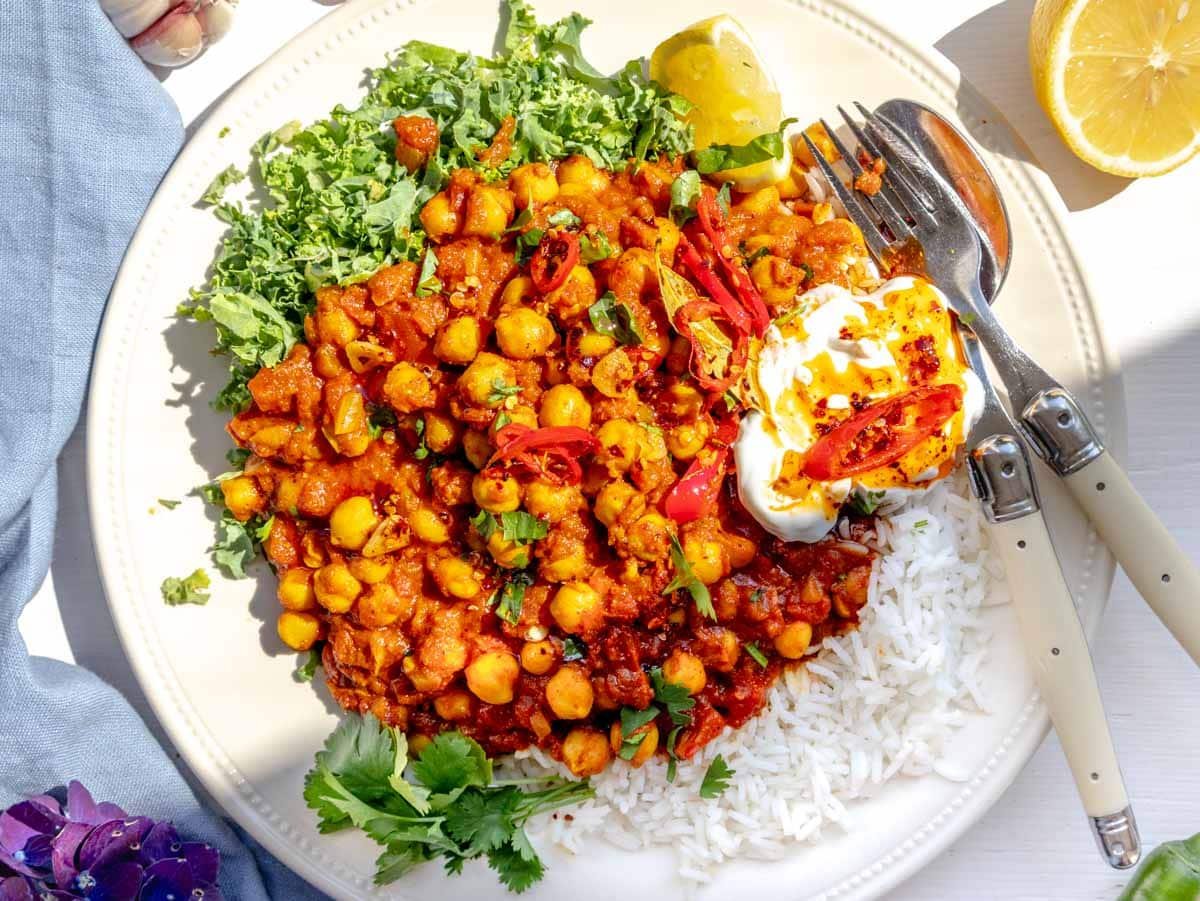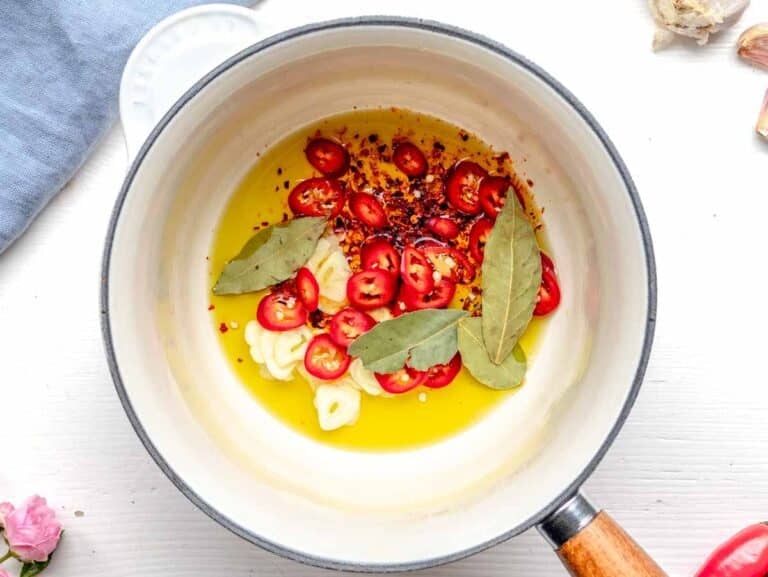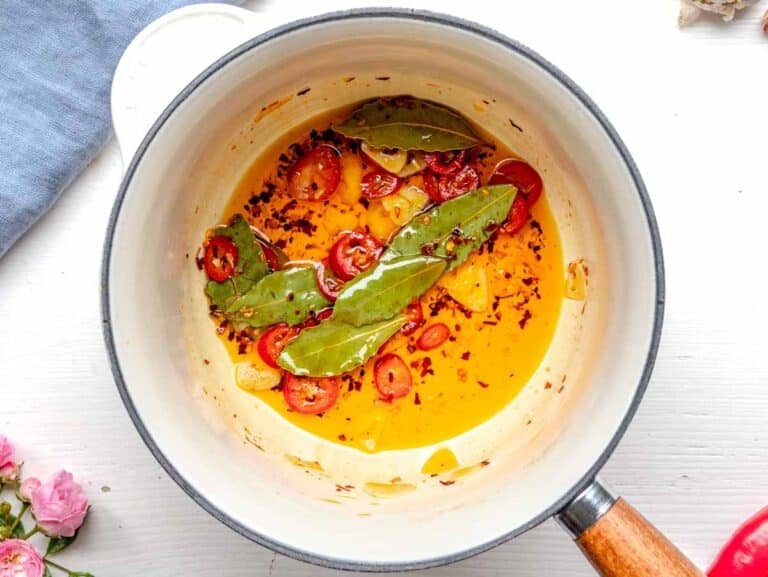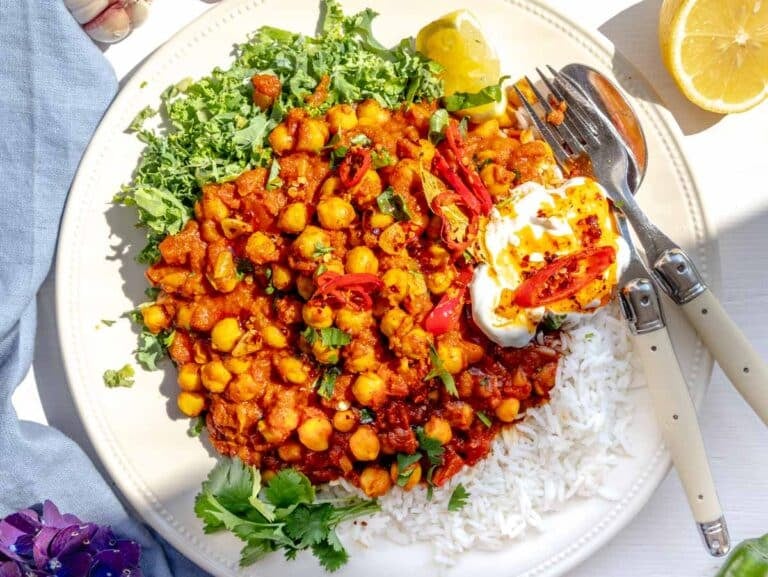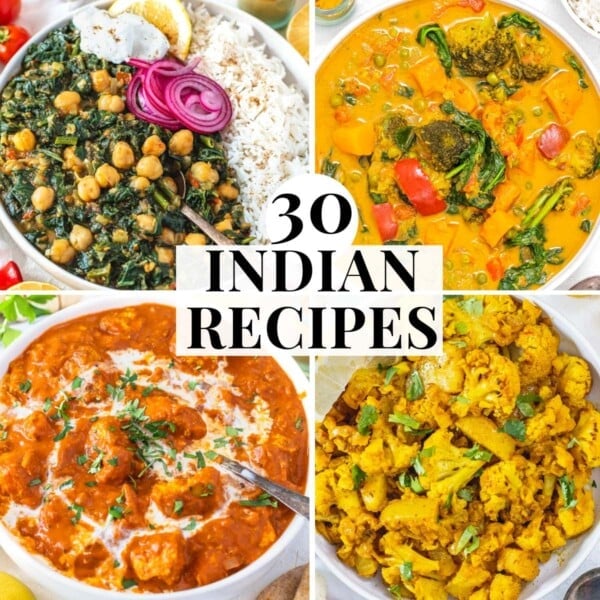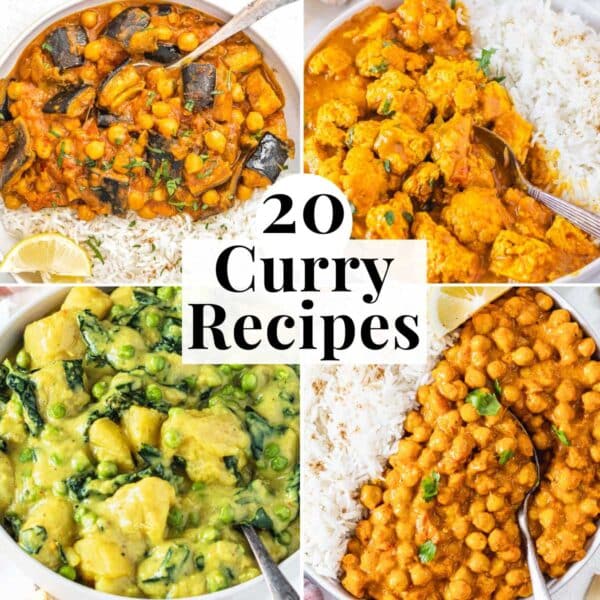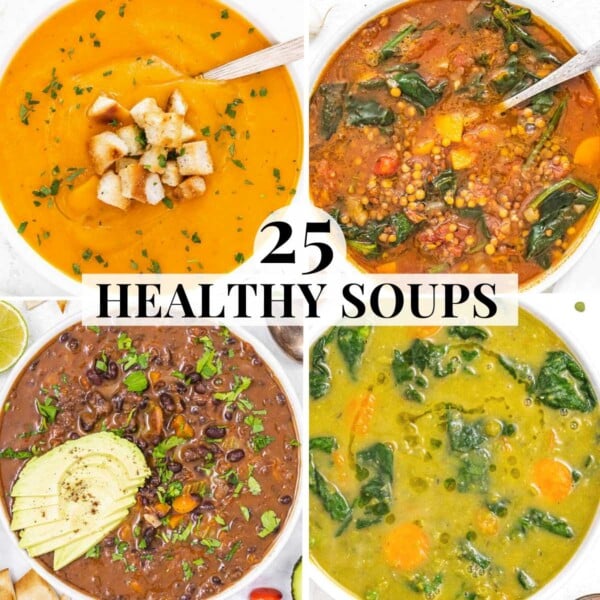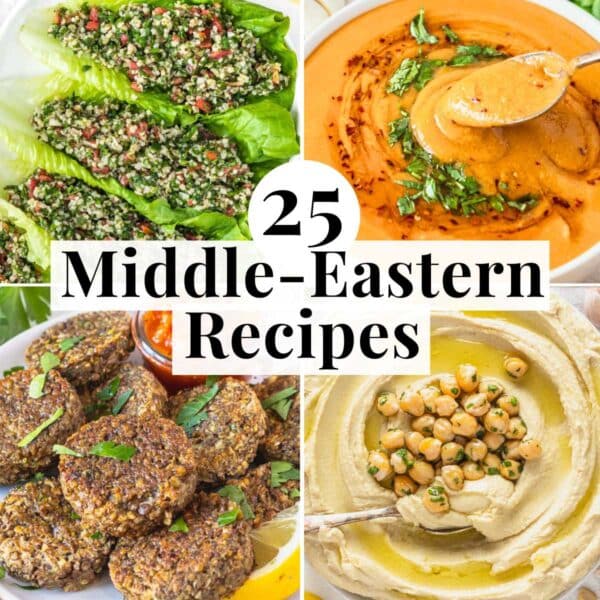It involves heating oil or ghee and adding whole or ground spices to release their flavors and aromas. This flavored oil is typically added to a dish at the beginning or end of cooking to enhance its taste.
Fat
Pick an oil such as olive oil, avocado oil, coconut oil, mustard oil, or any other vegetable oil or ghee, a type of clarified butter popular in Indian cooking. We recommend olive oil as it’s widely available and healthier than other fats.
Aromatics
We add thinly sliced garlic, fresh chilies, and bay leaves. Other good aromatics are onions, shallots, and curry leaves.
Spices
We add cumin (ground or seeds), ground coriander, and a cinnamon stick if available. Other good spices are mustard seeds, red pepper flakes, asafoetida or hing, cloves, star anise, and turmeric powder. Remember that different regions in India use various combinations of spices and ingredients for their tadka. So feel free to experiment and create your favorite combinations of herbs and spices.
Salt
Don’t forget to add a pinch of sea salt or kosher salt to bring the flavors together. Heat the oil in a saucepan on medium heat for about 30 seconds. We always use olive oil for tadka as it’s the healthier choice and tastes great. Add the aromatics first – we use sliced garlic, bay leaves, and thinly sliced fresh chili – and a pinch of salt. Fry gently for about 30 seconds or until fragrant. Tip: At this stage, you can also add a cinnamon stick, star anise, thinly sliced onion or shallots, and curry leaves. Add the spices—we added ground cumin, ground coriander, and red pepper flakes—stir and fry for 30 more seconds. Turn the heat off and set aside for 5 minutes or more to infuse. Tip: At this stage, you can also add mustard seeds and any other spice of your choice. Tip: Make sure the oil doesn’t smoke and nothing burns. If so, turn off the heat immediately and move the oil around the pan to cool down. There are two main ways to use tadka: It’s excellent with curries, vegetables, soups, rice, and dals, especially if topped with cold yogurt. For instance, try it as a finishing oil on chana masala, chana dal, chana saag, moong dal, mung bean soup, Navratan korma, chickpea stew, lentil curry, aloo gobi, and chickpea curry. It’s also delicious for tempering soups such as red lentil soup, cauliflower soup, and broccoli soup. For more dishes that go well with tadka, check out our compilation of delicious Indian vegetarian recipes. Here are our tips for making tadka healthier, and enjoy it as part of a healthy and tasty diet.
Add small amounts on top of a dish – one to two teaspoons is usually enough – rather than mixing it in a dish. Use a healthier fat, such as olive oil or avocado oil, instead of saturated fats like butter, ghee, or ultra-processed vegetable oils. Please don’t burn the oil; instead, heat it gently. The oil should not produce smoke. If it smokes, it produces unhealthy particles, which we want to avoid.
Indian Vegetarian Recipes
20 Easy Curry Recipes
Healthy Soup Recipes
25 Middle-Eastern Recipes
